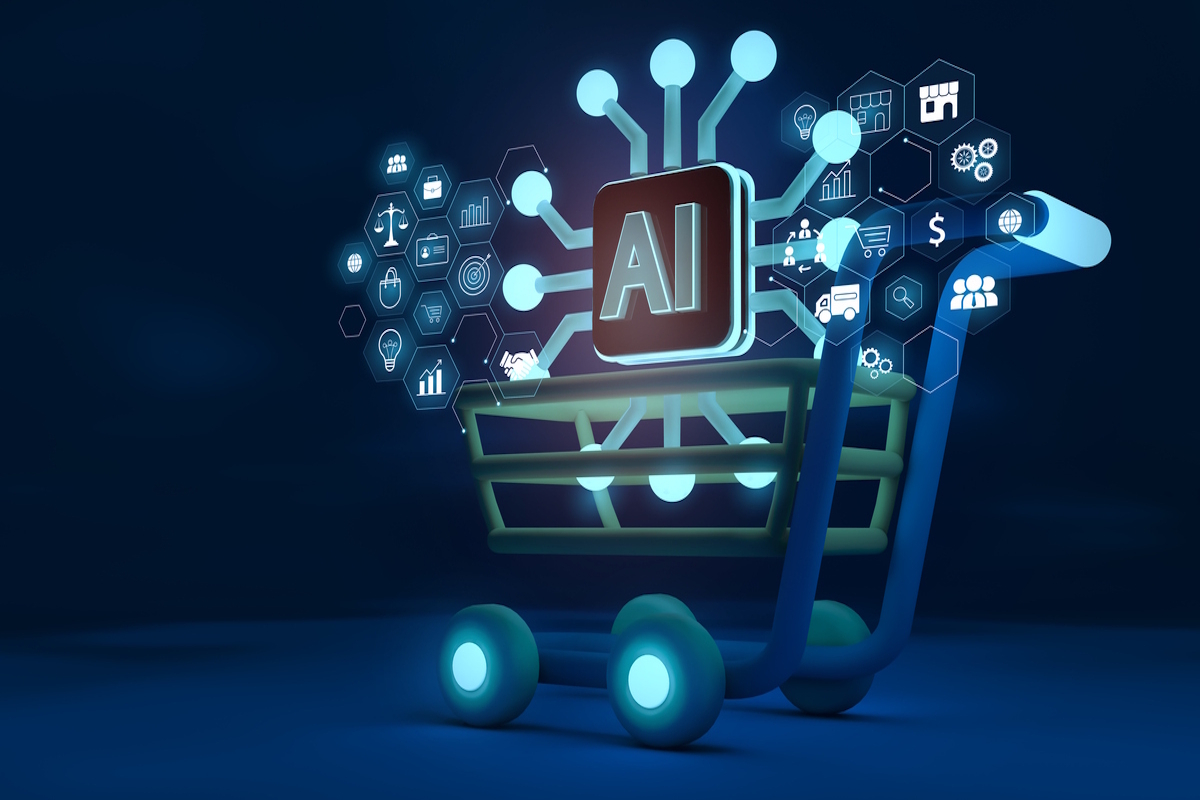Artificial Intelligence in the High Street

Rob Gamlin at VoCoVo argues that AI in brick-and-mortar retail needs human enablement to make a true difference
AI adoption in brick-and-mortar retail is on the rise, with technologies like computer vision, predictive analytics and smart shelving promising to reshape everything from stock management to reducing queue times.
However, whilst new tools are hitting the market seemingly by week, their true impact still depends on how well they’re embedded into daily operations. For retailers, the real value of AI won’t come from automation alone – it will come from enabling team members to do more with it.
Security enhancing use cases
One of the areas that retailers are allocating their resources to is security and crime prevention. Costs from criminal activity rose by 19% in the first half of 2024 to reach £39.5m, leading some retailers, such as Co-op, to trial AI-driven solutions to battle the surge in shoplifting offences.
AI-driven solutions offer ways to address these concerns in a proactive way. For example, AI-enabled CCTV systems closely analyse live footage to identify any suspicious behaviours. This could be a customer attempting to conceal items before making a quick getaway, or a group of individuals displaying unusual patterns of movement before a crime is about to take place.
Where a theft or incident occurs, AI can pick up on it, recognise the issue and ensure security teams aren’t always required to manually monitor for all incidents.
Supporting colleagues to improve operations
Any implemented AI tool should clearly demonstrate how the capabilities it offers are intrinsically linked to that retailer’s ability to provide excellent customer service. Take the use of AI-powered CCTV systems mentioned previously.
The use case of these tools is clear and it’s easy to see how they can play a valuable role in improving safety, but unless the AI is embedded into the stores wider operations and existing investments in technology are maximised with possible integrations, the benefits stop short. This “final mile” connection is often missing and prevents benefits from being made to the overall in-store experience.
For instance, if the AI-powered CCTV system flags a potential issue but a store’s security team isn’t notified in the most effective way because they’re not in the control room or at their security station at that precise time, it creates a disconnect between the technology and the benefit.
In another example, if a certain item is running low or a perishable nearing its expiry date, AI can spot this. Effective use of this tool would ensure real-time alerts are sent to colleagues via headset devices, which many supermarkets already have implemented. This enables team members to replenish stock before it runs out, reduce out-of-stock incidents and remove any items that may have gone past their use-by dates.
The key here isn’t removing the need for humans in stores but empowering them through informed connectivity to the wider retail ecosystem.
As AI tools develop, we will increasingly be relying on colleagues to make the most of these capabilities, being able to do more with less, quicker. With a wealth of information at their fingertips, team members will be empowered to deliver personalised and seamless shopping experiences to expectant shoppers.
Enabling integrations
For integrations between these solutions to be made a reality, AI needs a strong technology foundation. Open APIs can give retailers the flexibility to integrate the smart and AI-enabled technologies and tools that they choose. It’s these open interfaces that allow retailers to connect technology where a range of alerts and notifications can be converted into speech, thereby enabling colleagues to be more effective in their roles.
AI in bricks and mortar retail will have immediate impact when it focuses on supporting colleagues rather than replacing them. That’s why the other crucial strategy to leveraging these solutions effectively is sufficient colleague training.
The value of exceptional training
With the immense potential of AI, retailers are faced with a plethora of new tools that promise great reward. It’s important that retailers consider not just single use case benefits from those they select, but which ones will work best with their existing technology stack to ensure colleagues get the most from the investment.
Whether it’s shelf-scanning tools, queue management systems, or automated customer insights, these technologies can feel like background tools unless integrated into the retail ecosystem and staff feel confident in how to use the data and insights they generate. Training shouldn’t just cover the technical ‘how’ – it needs to show teams the ‘why’. Helping colleagues understand how AI can lighten repetitive tasks, free up time for more valuable interactions, or improve safety builds trust in the technology and leads to better outcomes all round.
To make this sustainable, AI training needs to be embedded from day one. By including it as a core part of onboarding, retailers can build digital confidence early and ensure new starters understand how AI fits into their role – not as a replacement, but as a support tool. This sets the tone for a culture where innovation is embraced and digital tools are seen as part of the team.
When colleagues are engaged and empowered, they become active participants in shaping the in-store experience. For example, predictive stock systems can tell teams where gaps are likely to appear – but it’s the human decision-making that makes the difference. Similarly, digital dressing room assistants might provide valuable insights, but it’s a knowledgeable team member who can turn those insights into meaningful advice that keeps shoppers coming back.
Again, AI’s greatest strength in physical retail isn’t just in what it can automate, but in how it can help people do their jobs better. By investing in colleague training and making it part of the onboarding journey, retailers can unlock improvements that genuinely translate to a stronger in-store experience.
Delighting customers
As AI continues to reshape the future of brick-and-mortar retail, its success will hinge not on the technology alone, but on how well it’s implemented, understood and embraced by the people on the shop floor. Retailers that invest in tools and training – embedding both into their operational fabric from day one – will be best placed to turn AI from a back-end support system into a front-line advantage.
By making colleagues central to this journey, AI becomes more than just a solution to efficiency or security – it becomes a driver of better service, smarter decisions, and a more connected in-store experience.
Rob Gamlin is Founder and Co-CEO at VoCoVo
Main image courtesy of iStockPhoto.com and Marco Marca

Business Reporter Team
You may also like
Most Viewed
Winston House, 3rd Floor, Units 306-309, 2-4 Dollis Park, London, N3 1HF
23-29 Hendon Lane, London, N3 1RT
020 8349 4363
© 2025, Lyonsdown Limited. Business Reporter® is a registered trademark of Lyonsdown Ltd. VAT registration number: 830519543





